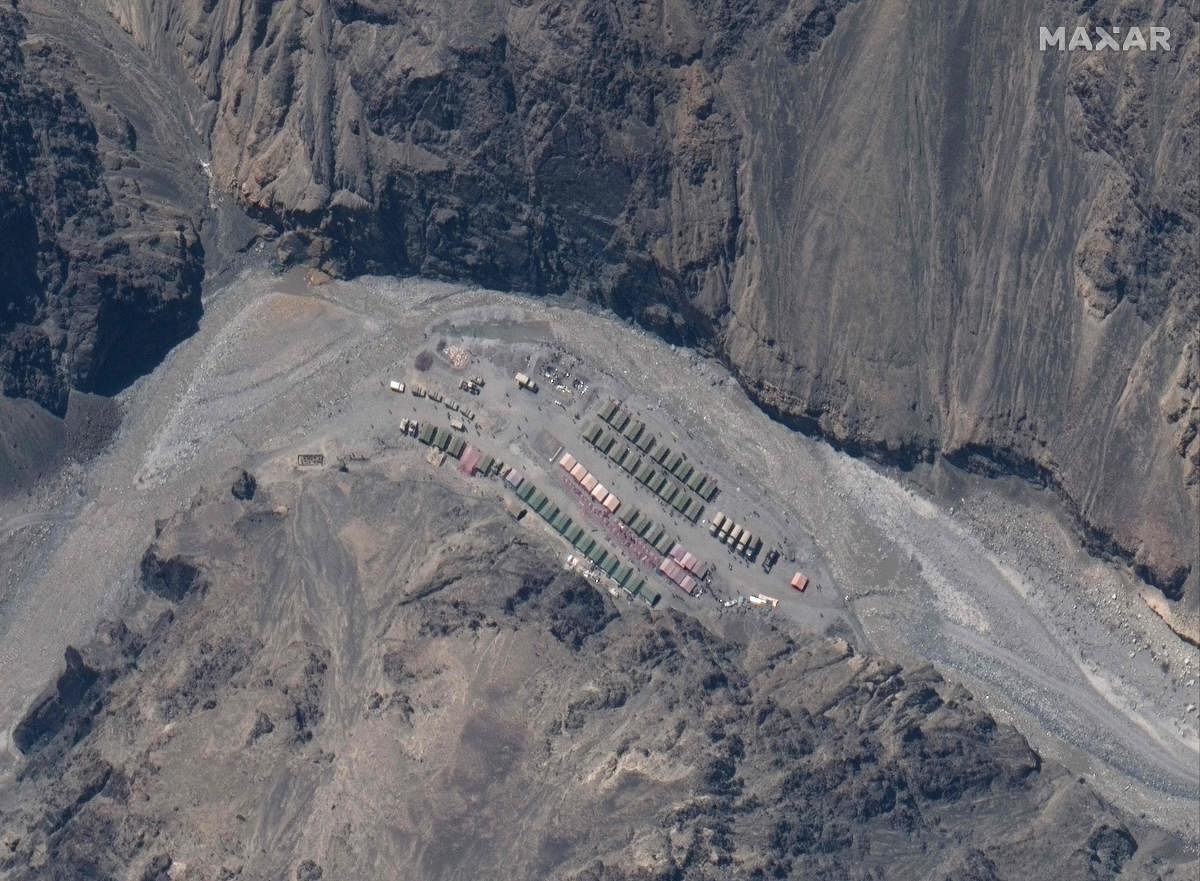
Ten days after the Galwan Valley clash, Chinese People’s Liberation Army has pulled back some of its troops and vehicles from the conflict zone in east Ladakh but the situation remains tense at Depsang bulge, Galwan Valley and Pangong Tso areas with India sending more troops in eastern Ladakh for reinforcement.
At Galwan, the new tents that came up after the June 15 bloody brawl are very much in place with the PLA showing no intention to dismantle them. The disengagement seen on Thursday was as per the plan agreed upon by India and China when military leaders from the two sides met for the second time earlier this week.
“The Chinese side, on June 22, had given assurance that they will move back troops from front to the depth areas. In this regard, some troops and vehicles were moved back by them in the Galwan area,” sources said.
The pull back, however, is far less than the number of soldiers injected by the PLA in the last one and half months. India too gradually enhanced its troop presence to counter the threat.
With three Divisions of the Indian Army (nearly 45,000 men) already in Ladakh, Indo-Tibetan Border Police has now augmented its strength. “We have sent more troops to Ladakh. We are alert as the country’s safety and security is the most important and we are on the job,” said an ITBP source. The ITBP men would assist the Army in patrolling duty.
India’s 3,488 km long disputed border with China is on high alert with sources saying more talks are needed to ensure deescalation from each of the contentious areas in Galwan Valley (PP-14, PP-15 and PP-17A) and Pangong Tso (lake). Meanwhile, China increased its presence in the north of Galwan too opening up a new front in Depsang Bulge.
The most fortified Chinese presence continues to be on the northern banks of the 135 km long Pangong lake where the PLA stopped Indian troops at Finger 4, cutting their regular patrolling up to Finger 8. Going by the Indian perception, the Line of Actual Control runs through Finger 8 whereas by the Chinese perception, it passes through Finger 4.
“The PLA has already forced a change in the LAC on the northern bank of the Pangong Tso. Chinese soldiers are currently in physical occupation of areas along their perception of the LAC and have constructed numerous posts,” Lt Gen D S Hooda (rtd), former General Officer Commanding-in-Chief of the Northern Command told DH.
The Pangong Tso bottleneck was left unresolved even in the first meeting between senior military commanders of India and China on June 6 with both sides agreeing to having subsequent dialogues at the Corps Commander level to sort out the thorny issues.
Since then, the Chinese side heavily augmented its positions with satellite images showing around 500 structures, fortified trenches and a new boat shed over 20 km further forward from the existing one. More structures appear to be under construction as Chinese forces became the overwhelming majority in the disputed area.
